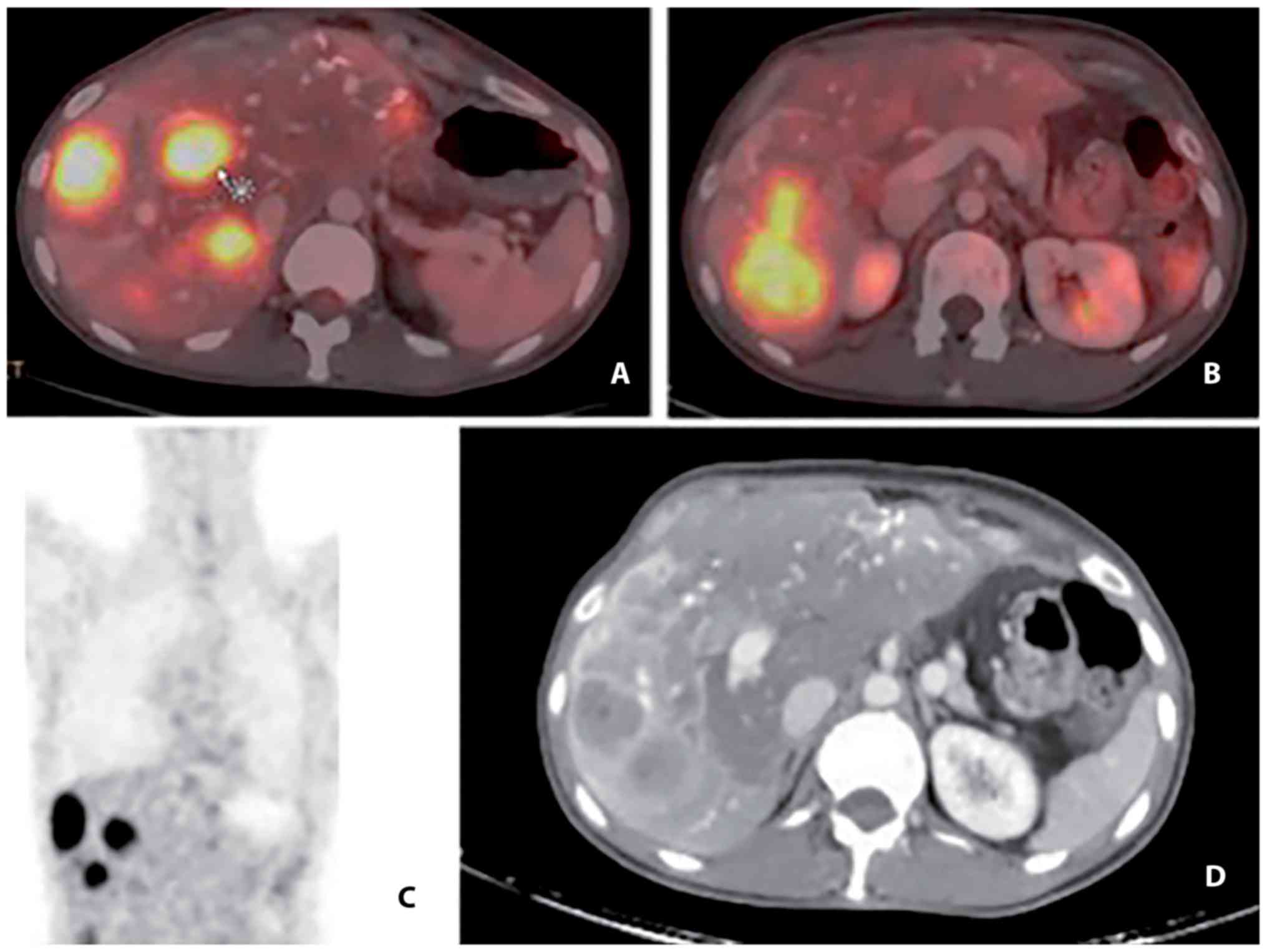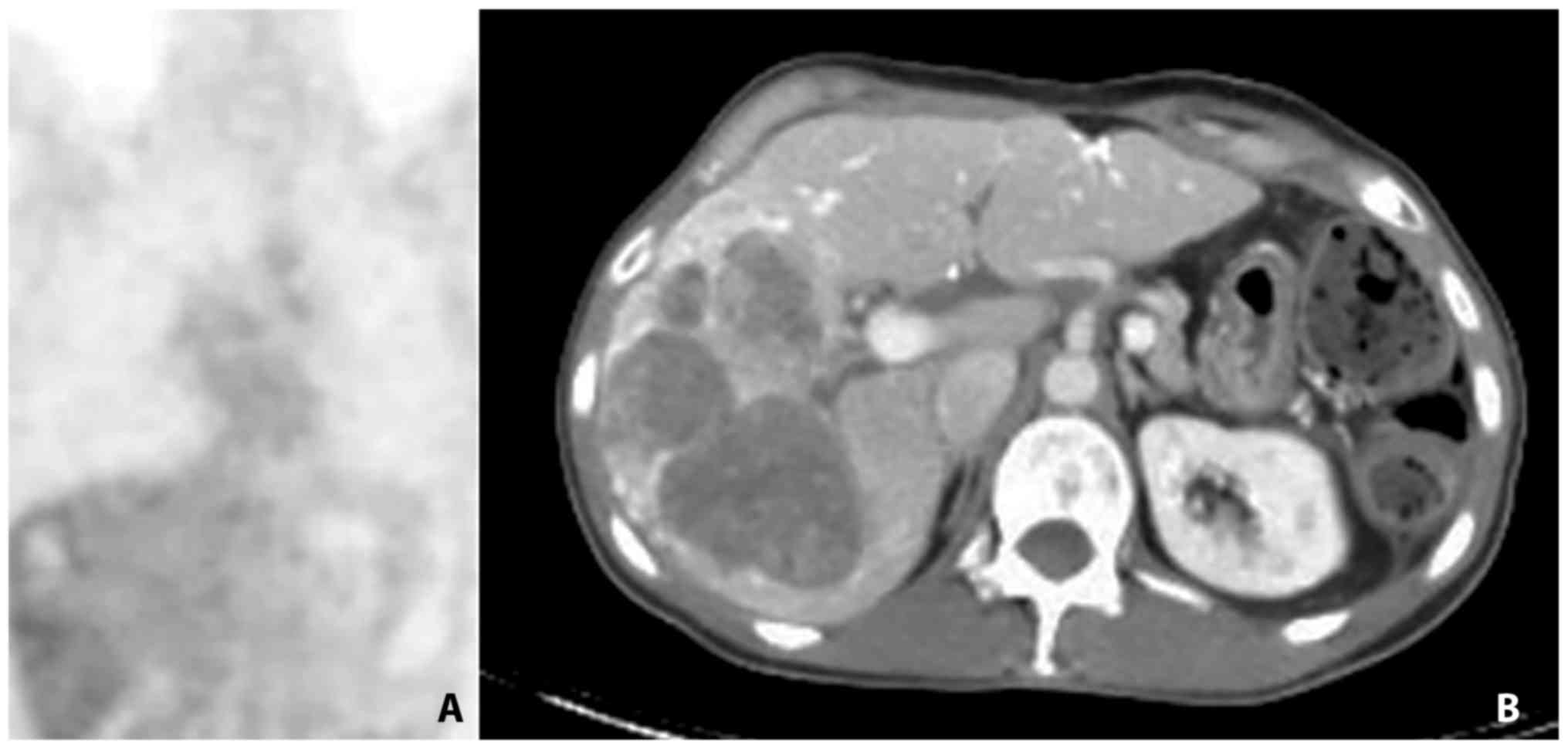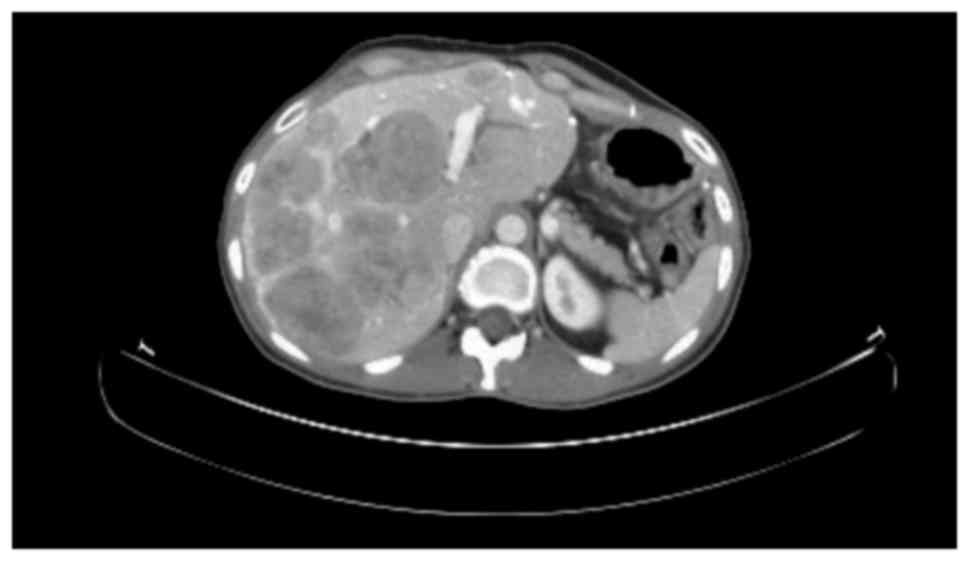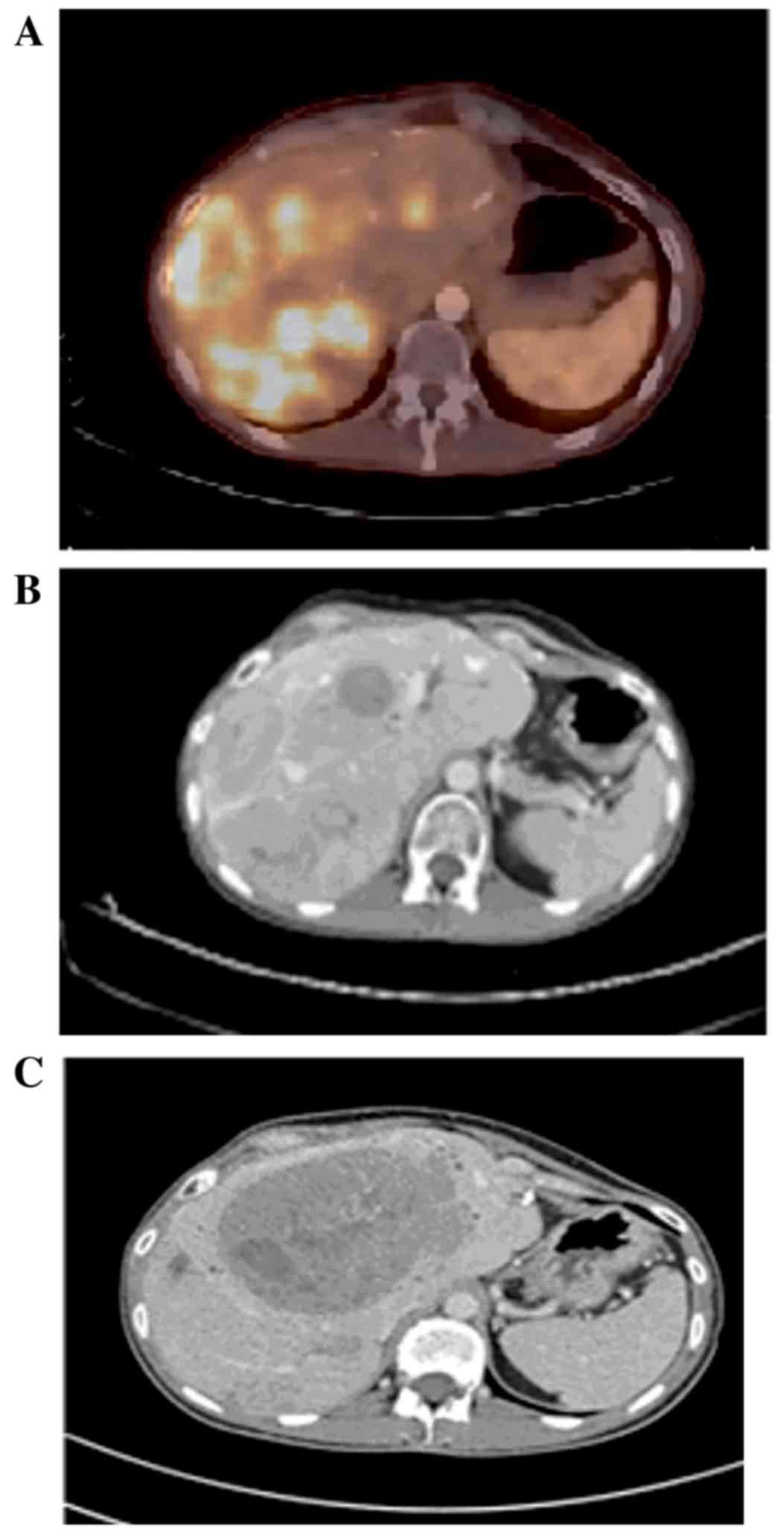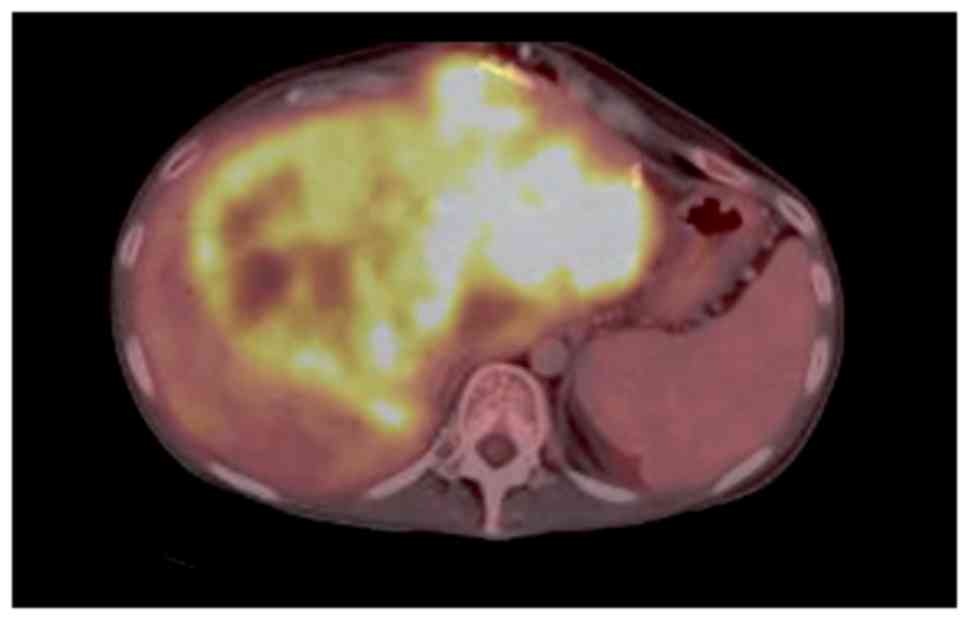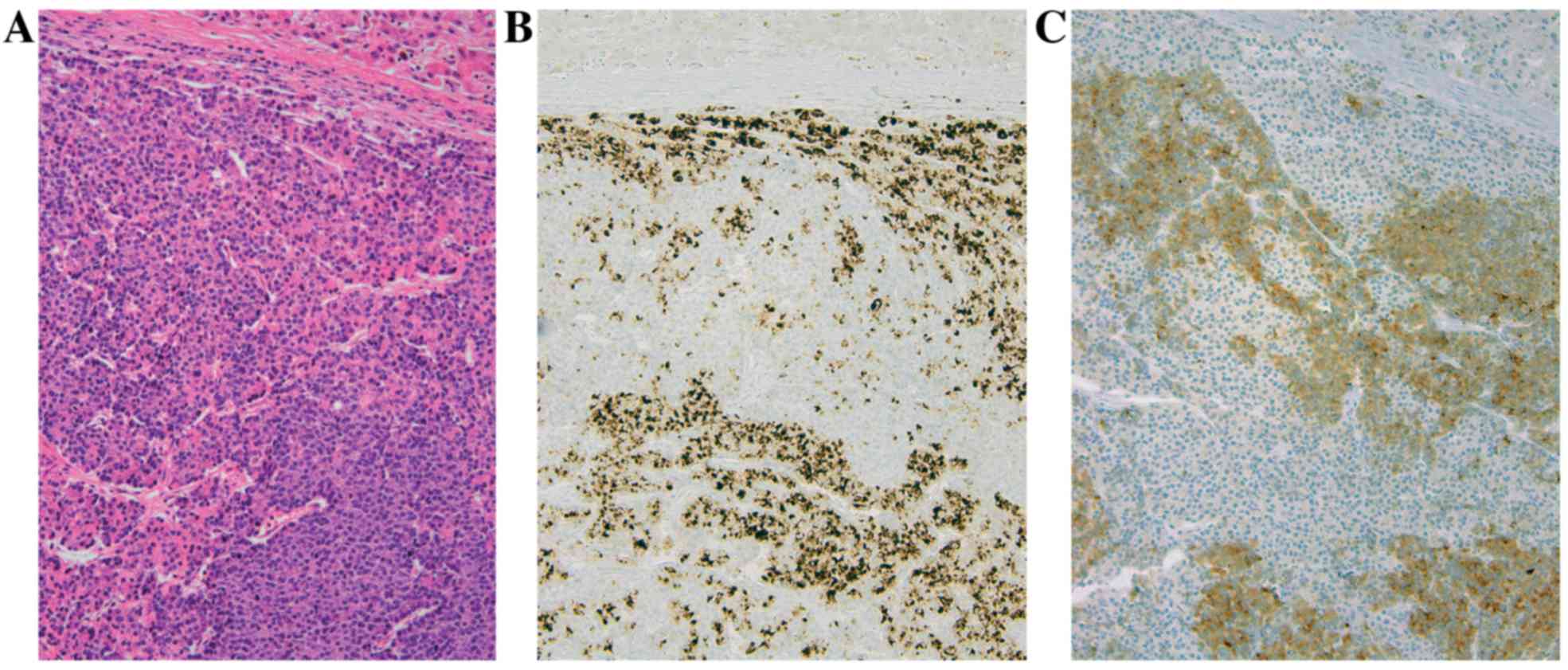|
1
|
Wisnoski NC, Townsend CM Jr, Nealon WH,
Freeman JL and Riall TS: 672 Patients with acinar cell carcinoma of
the pancreas: A population-based comparison to pancreatic
adenocarcinoma. Surgery. 144:141–148. 2008. View Article : Google Scholar : PubMed/NCBI
|
|
2
|
Klimstra DS, Rosai J and Heffess CS: Mixed
acinar-endocrine carcinomas of the pancreas. Am J Surg Pathol.
18:765–778. 1994. View Article : Google Scholar : PubMed/NCBI
|
|
3
|
Ohike N, Kosmahl M and Klöppel G: Mixed
acinar-endocrine carcinoma of the pancreas. A clinicopathological
study and comparison with acinar-cell carcinoma. Virchows Arch.
445:231–235. 2004. View Article : Google Scholar : PubMed/NCBI
|
|
4
|
Liu Z, Dong C, Wang C, Liu Q, Sun D and
Wang L: Mixed acinar-endocrine carcinoma of pancreas: A case report
and brief review of the literature. Onco Targets Ther. 8:1633–1642.
2015. View Article : Google Scholar : PubMed/NCBI
|
|
5
|
Pasaoglu E, Dursun N, Ozyalvacli G,
Hacihasanoglu E, Behzatoglu K and Calay O: Comparison of world
health organization 2000/2004 and world health organization 2010
classifications for gastrointestinal and pancreatic neuroendocrine
tumors. Ann Diagn Pathol. 19:81–87. 2015. View Article : Google Scholar : PubMed/NCBI
|
|
6
|
Ogbonna OH, Garcon MC, Syrigos KN and Saif
MW: Mixed acinar-neuroendocrine carcinoma of the pancreas with
neuroendocrine predominance. Case Rep Med.
2013.7050922013.PubMed/NCBI
|
|
7
|
Has Simsek D, Kuyumcu S, Turkmen C, Sanlı
Y, Aykan F, Unal S and Adalet I: Can complementary 68 Ga-DOTATATE
and 18F-FDG PET/CT establish the missing link between
histopathology and therapeutic approach in gastroentero-pancreatic
neuroendocrine tumors? J Nucl Med. 55:1811–1817. 2014. View Article : Google Scholar : PubMed/NCBI
|
|
8
|
Kayani I, Bomanji JB, Groves A, Conway G,
Gacinovic S, Win T, Dickson J, Caplin M and Ell PJ: Functional
imaging of neuroendocrine tumors with combined PET/CT using
68Ga-DOTATATE (DOTA-DPhe1, Tyr3-octreotate) and 18F-FDG. Cancer.
112:2447–2455. 2008. View Article : Google Scholar : PubMed/NCBI
|
|
9
|
Panagiotidis E and Bomanji J: Role of
18F-fluorodeoxyglucose PET in the study of neuroendocrine tumors.
PET Clin. 9:43–55. 2014. View Article : Google Scholar : PubMed/NCBI
|
|
10
|
Kartalis N, Mucelli RM and Sundin A:
Recent developments in imaging of pancreatic neuroendocrine tumors.
Ann Gastroenterol. 28:193–202. 2015.PubMed/NCBI
|
|
11
|
Basu S, Ranade R and Thapa P: Correlation
and discordance of tumour proliferation index and molecular imaging
characteristics and their implications for treatment decisions and
outcome pertaining to peptide receptor radionuclide therapy in
patients with advanced neuroendocrine tumour: Developing a
personalized model? Nucl Med Commun. 36:766–774. 2015. View Article : Google Scholar : PubMed/NCBI
|
|
12
|
Rindi G, Klöppel G, Ahlman H, Caplin M,
Couvelard A, De Herder WW, Erikssson B, Falchetti A, Falconi M,
Komminoth P, et al: TNM staging of foregut (neuro)endocrine tumors:
A consensus proposal including a grading system. Virchows Arch.
449:395–401. 2006. View Article : Google Scholar : PubMed/NCBI
|
|
13
|
Garcia-Carbonero R, Sorbye H, Baudin E,
Raymond E, Wiedenmann B, Niederle B, Sedlackova E, Toumpanakis C,
Anlauf M, Cwikla JB, et al: ENETS consensus guidelines for
high-grade gastroenteropancreatic neuroendocrine tumors and
neuroendocrine carcinomas. Neuroendocrinology. 103:186–194. 2016.
View Article : Google Scholar : PubMed/NCBI
|
|
14
|
Vélayoudom-Céphise FL, Duvillard P, Foucan
L, Hadoux J, Chougnet CN, Leboulleux S, Malka D, Guigay J, Goere D,
Debaere T, et al: Are G3 ENETS neuroendocrine neoplasms
heterogeneous? Endocr Relat Cancer. 20:649–657. 2013. View Article : Google Scholar : PubMed/NCBI
|
|
15
|
Basturk O, Yang Z, Tang LH, Hruban RH,
Adsay V, McCall CM, Krasinskas AM, Jang KT, Frankel WL, Balci S, et
al: The high-grade (WHO G3) pancreatic neuroendocrine tumor
category is morphologically and biologically heterogenous and
includes both well differentiated and poorly differentiated
neoplasms. Am J Surg Pathol. 39:683–690. 2015. View Article : Google Scholar : PubMed/NCBI
|
|
16
|
Tang LH, Untch BR, Reidy DL, O'Reilly E,
Dhall D, Jih L, Basturk O, Allen PJ and Klimstra DS: Well
differentiated Neuroendocrine tumors with a morphologically
apparent high-grade component: A pathway distinct from poorly
differentiated neuroendocrine Carcinomas. Clin Cancer Res.
22:1011–1017. 2016. View Article : Google Scholar : PubMed/NCBI
|
|
17
|
Sorbye H, Welin S, Langer SW, Vestermark
LW, Holt N, Osterlund P, Dueland S, Hofsli E, Guren MG, Ohrling K,
et al: Predictive and prognostic factors for treatment and survival
in 305 patients with advanced gastrointestinal neuroendocrine
carcinoma (WHO G3): The NORDIC NEC study. Ann Oncol. 24:152–160.
2013. View Article : Google Scholar : PubMed/NCBI
|















